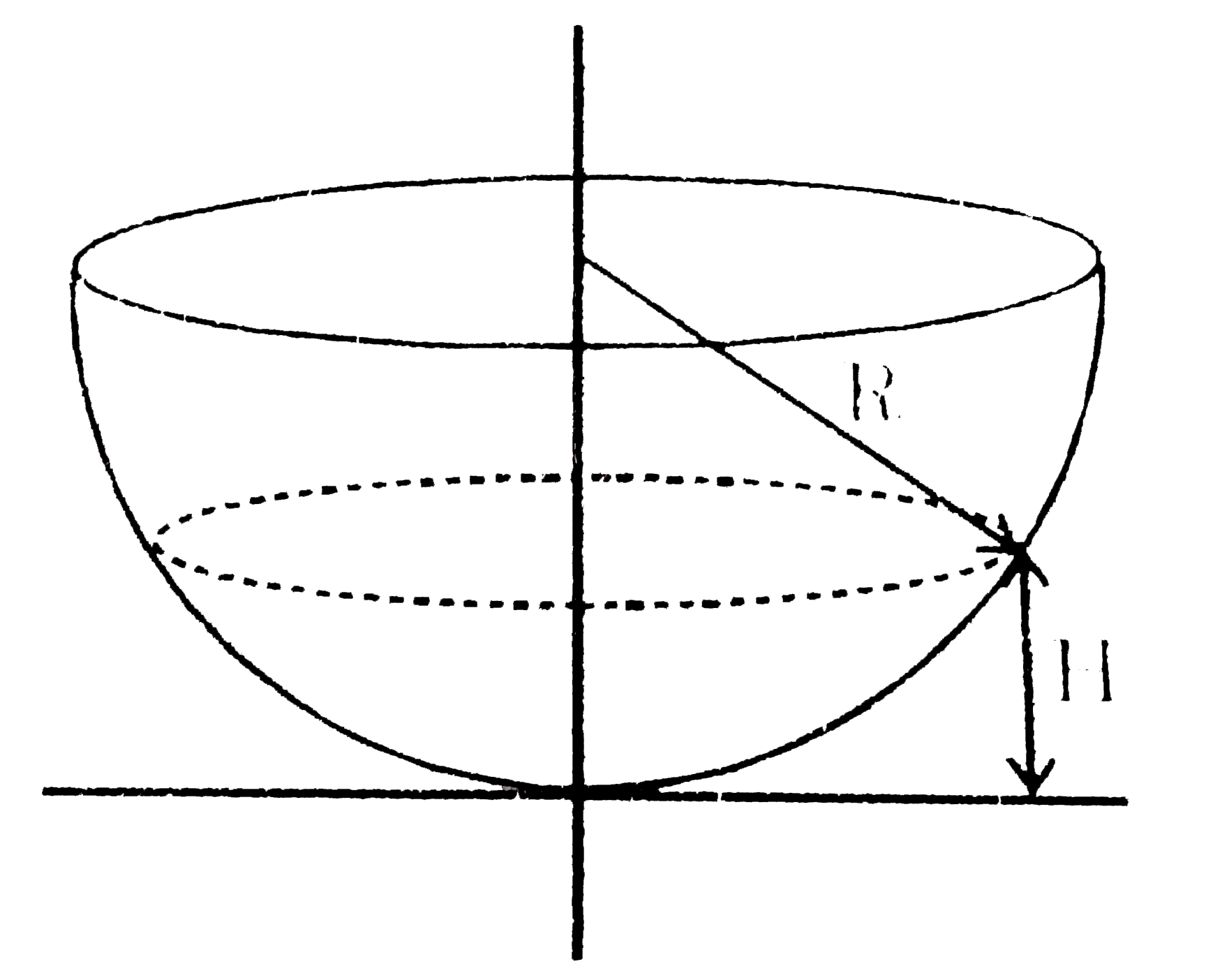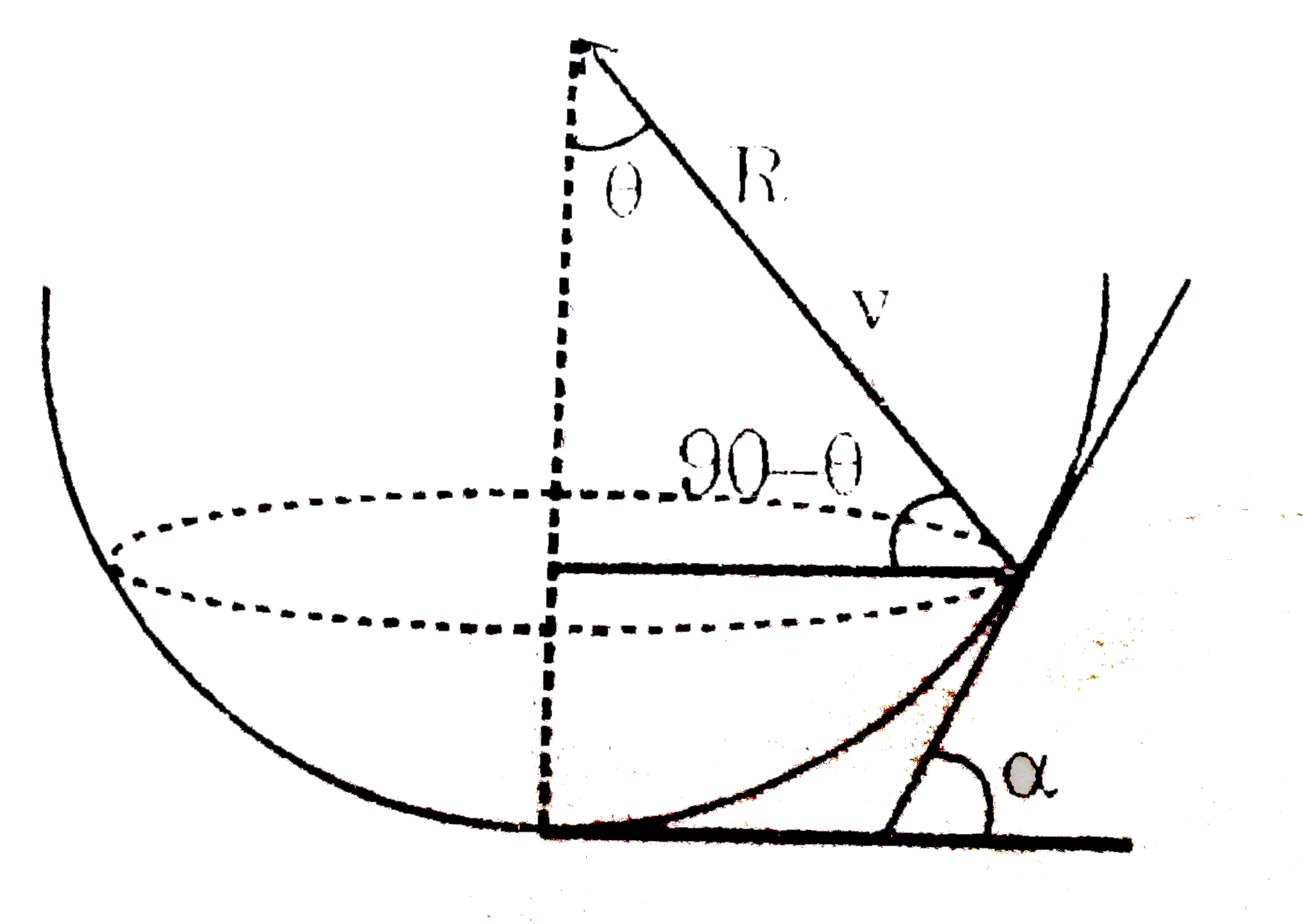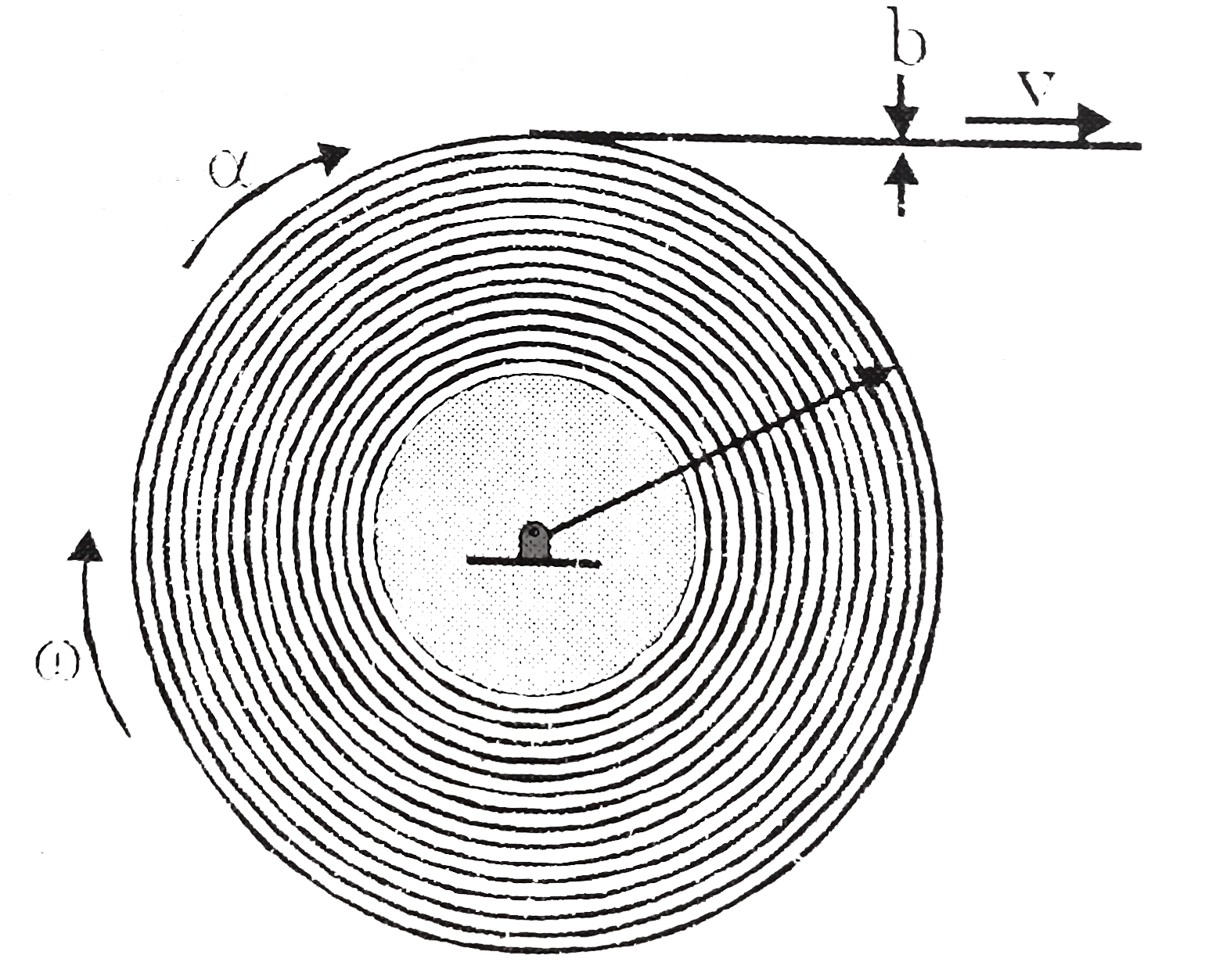A small marble of mass m moves in a circular orbit very close to the bottom of a circular bowl. Assume that the marble can only move in orbits whose angular momentum is L=nh2π where h is plank constant.
 Solution in Gujrati
Solution in Gujrati
(a)The allowed radius of the circular orbit is proportionsl to n(3/2)
(b)The allowed speed is proportional to n(1/2)
(c) Taking gravitional potential energy at bottom to be zero, the allowed energy is given by nh2π√gR
(d)Gravotational potential energy and kinetic energy in any allowed state are equal (taking reference at bottom.)
The correct Answer is:B, C, D
Ncosθ=mg
Nsinθ=mv2x

tanθ=v2gx=v2gRsinθ
mvx=nh2π
mv×Rsinθ=nh2π
m√gRsin2θcosθRsinθ=nh2π
m√gR3sin2θ√cosθ=nh2π
cosθ≈1
m√gR3×x2R2=nh2π
x=
⎷nh2πm√Rg
v∝√n
v=√nh√2π√m×
⎷nh2πm√Rg=√nh2πm√gR
E=mgh+12mv2
mg(R−Rcosθ)+12m×nh2πm√gR
12mgR×x2R2+12nh4π√gR
mg2R×nh2πm√Rg+nh4π√gR
E=nh2π√gR
Topper's Solved these Questions
- TEST PAPERSBOOK - ALLEN CHAPTER - TEST PAPERSEXERCISE - part-2 physics
73 Videos
- TEST PAPERSBOOK - ALLEN CHAPTER - TEST PAPERSEXERCISE - part-2 physic
48 Videos
- TEST PAPERSBOOK - ALLEN CHAPTER - TEST PAPERSEXERCISE - PAPER 3
92 Videos
- TEST PAPER 4BOOK - ALLEN CHAPTER - TEST PAPER 4EXERCISE - PHYSICS
45 Videos
- UNIT & DIMENSIONS, BASIC MATHS AND VECTOR BOOK - ALLEN CHAPTER - UNIT & DIMENSIONS, BASIC MATHS AND VECTOR EXERCISE - Exercise (J-A)
7 Videos
Similar Questions
A bead is connected with a fixed disc of radius R by an inextensible massless string in a smooth horizontal plane. If the bead is pushed with a velocity v0 prependicular to the string, the bead moves in a curve and consequently collapses on the disc. Then

View SolutionIn a continuous printing process paper is drawn into the press at a constant speed v. Denoting by 'r' the radius of the paper roll at any given time and by 'b' the thickness of the paper. What is the angular acceleraion of the paper roll?

View SolutionA satellite S is moving in an elliptical orbit around the earth. The mass of the satellite is very small compared to the mass of the earth.
View SolutionTwo forces, each of magnitude F have a resultant of the same magnitude F. The angle between the two forces is
View SolutionMatch List I with List II and select the correct answer using the codes given below the lists :

View SolutionA small particle of mass m moves in such a way that the potential energy U = ar^2 , where a is constant and r is the distance of the particle from the origin. Assuming Bhor model of quantization of angular momentum and circular orbits, find the rodius of nth allowed orbit.
View SolutionA small particle of mass m moves in such a way that the potential energy U=12mω2r2, where ω is a constant and r is the distance of the particle from the origin. Assuming Bohr's model of quantisation of angular momentum and circular orbits. Find the radius of the nth orbit.
View SolutionA small marble of mass m moves in a circular orbit very close to the bottom of a circular bowl. Assume that the marble can only move in orbits whose angular momentum is L = (nh)/(2pi) where h is plank constant.
View SolutionSTATEMENT-1: The angular momentum of d-orbitals is √6h2π
STATEMENT 2 : Angular momentum of electron in orbit is mvr=nh2π
View SolutionStatement-1: The orbital angular momentum of d-electron in orbitals is sqrt(6)(h)/(2pi) Statement-2: Angular momentum of e^(-) in orbit is mvr =(nh)/(2pi)
View SolutionIf the angular momentum of a planet of mass m, moving around the Sun in a circular orbit is L, about the center of the Sun, its areal velocity is :
View Solutionएक कक्षा में चक्कर लगा रहे इलेक्ट्रॉन का कक्षकीय कोणीय संवेग ( orbital angular momentum ) h2π√l(l+1) है । s-इलेक्ट्रॉन के लिए इसका संवेग है :
View Solutionकिसी कक्ष में गति करते हुए इलेक्ट्रॉन का कोणीय संवेग निम्न व्यंजक द्वारा दिया जाता है : √l(l+1).h2π अतः एक s-इलेक्ट्रॉन का संवेग होगा-
View Solutionएक धूमकेतु किसी भारी तारे के परितः वृत्तीय कक्षा में घूम रहा है। क्या सम्पूर्ण कक्षा में उसका कोणीय संवेग संरक्षित रहेगा?
View Solutionগৌণ কোয়ান্টাম সংখ্যা l-এর জন্য কোনো অর্বিট্যালে ইলেকট্রনের কৌণিক ভরবেগ √l(l+1)h2π হলে s -অর্বিট্যালে ইলেকট্রনের কৌণিক ভরবেগের মান -
View Solutionएक कक्षक में एक घूमते हुए इलेक्ट्रॉन का कक्षक कोणीय संवेग √l(l+1).h2π है। s-इलेक्ट्रॉन के लिए संवेग का मान होगा
View Solution
